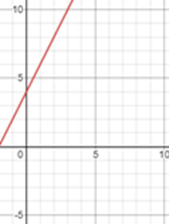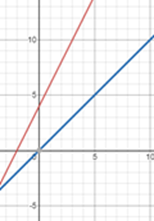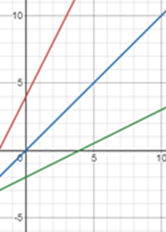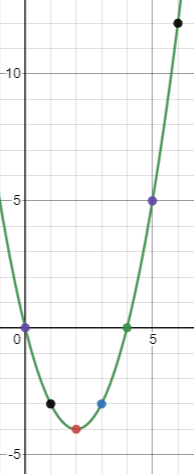Only one-to-one Functions (where one value of the domain goes to only one value in the range) can have inverses.
One-to-one Functions are when one value of the domain goes to only one value in the range. This differs from one-to-many functions where one value of the domain can go to several values in the range
Finding the inverse of a function
To find the inverse of a function, you need to
Replace the function Notation with y (eg f (x) become y)
Rearrange the function so that x is the subject
Replace the x with the inverse function notation (eg x becomes and y with x.
Find the inverse function of f (x) = 5x + 6
- Replace the function notation with y: y = 5x + 6
- Rearrange the function so that x is the subject: then
- Replace the x with the inverse function notation and y with x:
Find the inverse function of
- Replace the function notation with y:
- Rearrange the function so that x is the subject: then
- Replace the x with the inverse function notation and y with x:
Answering inverse functions questions
There are several types of questions you can be asked involving inverse functions. The questions can ask you to use one or more methods.
Solving the function when x is known
This type of question is shown through , where x is then replaced with a constant such as, . To solve these questions, all xs are replaced with the Number in the function.
Solve
Solving the function when it is set to a value
This type of question is shown through . To solve this type of question, you set the function equal to y and then rearrange the question to get x on its own.
When , find x when
Working with domains and ranges
You can be asked to find domains and ranges for inverse functions. The domain (set of input values) of the original function will be the range (set of possible output values) of the inverse function. The domain of the inverse function will be the range of the original function.
domain (Set of input values) | Range (Set of possible output values) |
| Original function | Inverse function |
| Inverse function | Original function |
Find the inverse of with a domain of . State the domain and range of .
Part 1) Finding the inverse.
- , then , then
Part 2) Finding the domain and the range of the inverse As stated above, the domain of the original functions is the range of the inverse. Therefore, the range of is . To find the domain of , you can find the range of the original function, so we are going to substitute the value for the domain. Range: Domain:Representing inverse functions graphically
There are two ways of drawing an inverse function:
1) Directly reflect the original function in the line y = x using your transformation of a graph skills.
2) By finding the inverse function and then plotting the x and y coordinates.
Directly reflect the original function in the line y = x
An inverse function is the reflection of the original function in the line y = x, therefore we can use the original line and the line y = x as the line of reflection.
Graphically show the inverse of f (x) = 2x + 4
1) The original function (red) depicted graphically

2) The original function (red) and the line of reflection, y = x (blue)

3) The inverse function (green) is obtained through reflecting the original function (red) in the line of reflection (x = y) (blue).

This method might be a bit more difficult when the original function has a variable raised to a power other than 1; for instance, quadratics
Plotting the coordinates of the inverse functions
After finding the inverse function, you can plot the domain and range (meaning the x and y coordinates)
Plot the inverse function with the domain
- First, find the y coordinates using the inverse function and the domain and then input the values into a table.
- Then plot the coordinates onto the graph
 Image caption
Image captionThen, draw the inverse function by drawing a line through all the points and extending through.

Inverse functions - Key takeaways
- Inverse functions are the opposite of the original function. Their notation differs from normal functions due to the . Only one-to-one functions are able to have inverse functions.
- Inverse functions can be formed by: 1) replacing the function notation with y; 2) rearranging the original function to make x the subject; 3) replacing the x with the inverse function notation and y with x.
- When the inverse function is formed, the domain is the original function's range and the range is the domain of the original function.












